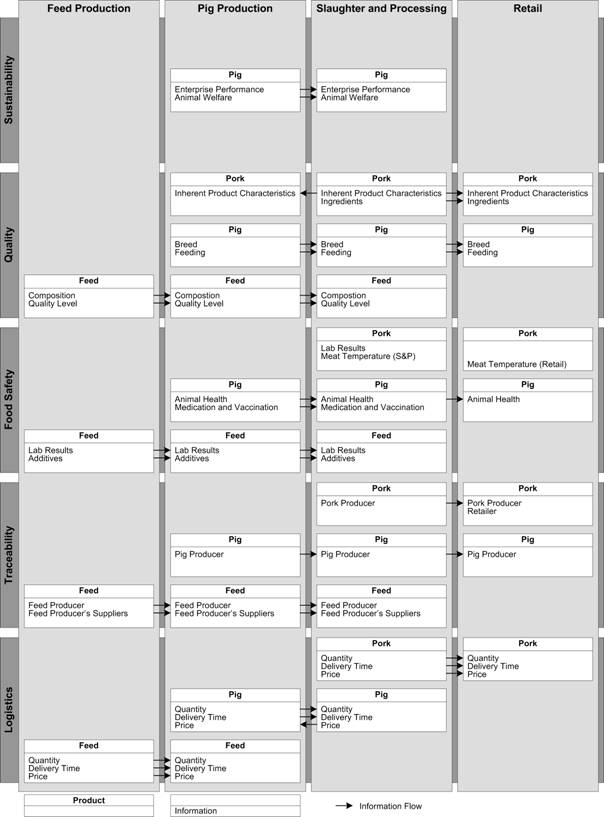Information systems – Reference model
The reference model below shows current information availability, which represents enterprise information supply and information exchange. It also shows best practice in terms of part of already-satisfied inter-enterprise information demand. Since the model is an ideal-type model, it provides a generic, sector-specific information model. The model can be used as template for chain-specific or enterprise-specific information models (for further reading see (Loos and Scheer, 1995; Thomas, 2006). Information availability has been assigned to the specific stages in a pork supply chain (feed production, pig production (i.e., breeding organization, breeder (multiplying of sows), farrowing, finishing, farmer cooperative, veterinarians, and transport), slaughter and processing, retail) for the main focus areas of information (logistics, traceability, food safety, quality, sustainability) and specific product categories (feed, pig, and pork).
Intra-enterprise information systems in the reference model have been complemented by chain/sector-focused information systems that focus on the five focus areas for information management. This last type of information systems may be public or private systems, storing or processing information relevant for chain actors or other stakeholders. These information systems can be a source of information that is also available in intra-enterprise information systems, but might also generate new information with added value. Examples are HIT-http://www.hi-tier.de/ (see also brief descriptions at http://www.aid.de/presse/presseinfo_archiv.php?mode=beitrag&id=1232 and http://de.wikipedia.org/wiki/HI-Tier) in Germany and QS and IKB (see also chapter 3, chapter 4, and chapter 5) in Germany and The Netherlands, respectively, which regulate quality information systems for the respective quality management systems.
